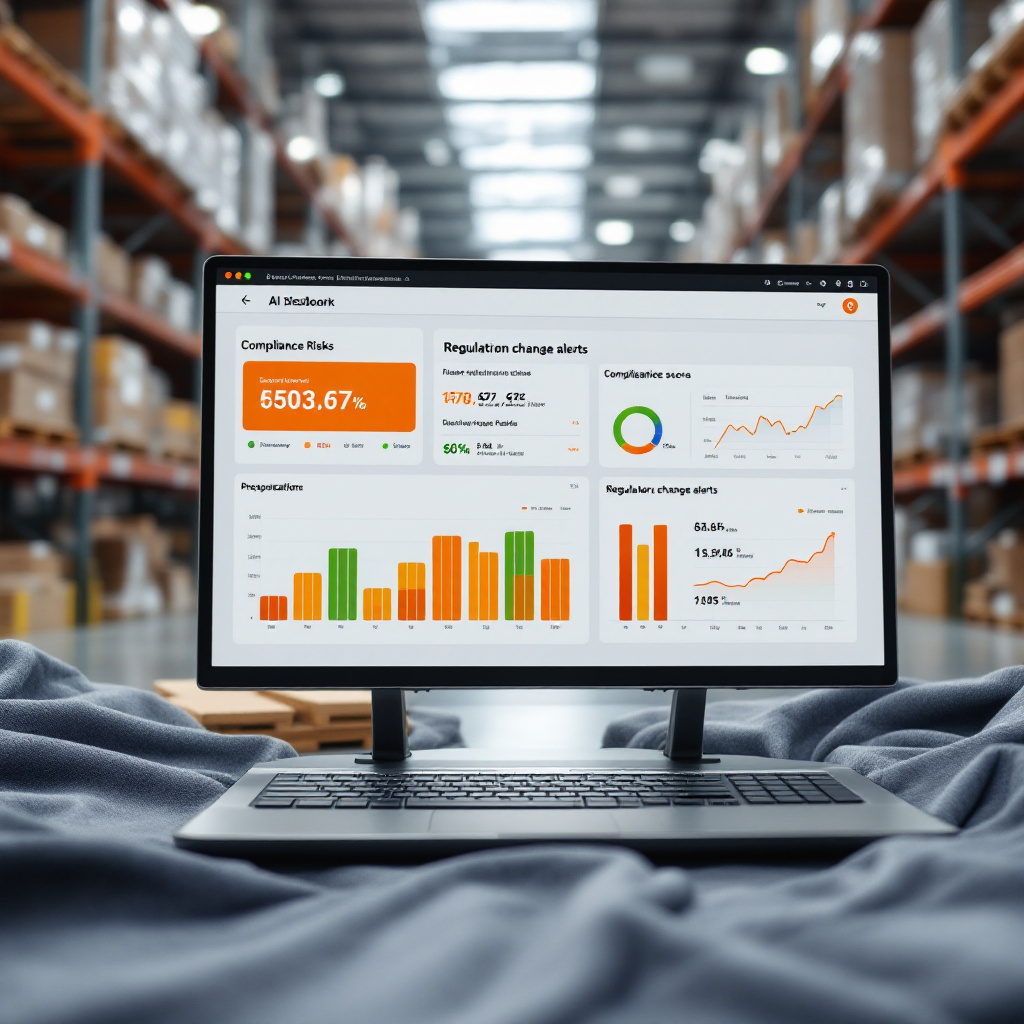Compliance landscape: understanding the stakes
The modern compliance landscape demands unprecedented attention from organizations in finance, healthcare, and technology. Regulatory bodies are introducing more stringent rules to ensure transparency, security, and ethical conduct. These sectors face complex regulatory environments such as GDPR in Europe, HIPAA in the United States, and SOX compliance in publicly traded companies. The average cost of failing to meet regulatory requirements is significant. For example, GDPR penalties have reached as high as £14.8 million for severe violations, underscoring the financial burden of non-compliance.
Human error remains a substantial driver of compliance breaches. Studies suggest that over 50% of incidents result directly from mistakes in manual processes or oversight. These lapses not only expose companies to fines but also damage their reputation with customers and stakeholders. The shift toward digital operations has increased data complexity and with it, the challenge of managing compliance effectively across multiple jurisdictions.
Organizations now face constant updates to legal frameworks. Keeping pace with regulatory changes while ensuring compliance with regulations involves continuous monitoring, interpretation, and application of standards. With diverse teams handling compliance activities, inconsistencies in interpretation can lead to potential compliance risks. This is why firms must streamline compliance programs, standardize internal controls, and establish proactive compliance approaches to reduce risk exposure.
In addition to the financial implications, non-compliance disrupts operations. Failure to adopt effective compliance strategies can slow growth, as resources are diverted to address investigations and remediation. Compliance officers play a critical role in translating complex requirements into actionable compliance workflows that teams can follow consistently. Therefore, identifying potential compliance issues before they escalate is not just a preventive measure—it is an operational imperative in today’s competitive market.

AI and automation: transforming compliance monitoring
AI and automation are transforming how companies handle compliance monitoring. Traditional compliance methods relied heavily on manual reviews, which could be slow and prone to oversight. In contrast, AI models can process vast volumes of compliance data in seconds, identifying anomalies and flagging potential risks. According to a recent industry survey, 59% of organizations now receive instant alerts on regulatory changes, allowing them to act swiftly and avoid potential compliance issues.
Automation ensures that compliance checks happen continuously rather than at set intervals, closing gaps that manual systems may miss. For example, automated compliance systems can monitor transactions in real time, applying both rules-based analysis and advanced pattern recognition to detect irregularities. This proactive approach to compliance reduces the risk of missed deadlines or overlooked obligations.
By replacing repetitive compliance tasks with AI capabilities, companies free up skilled staff for higher-value compliance efforts, such as policy interpretation and strategic planning. This shift not only mitigates human error but also delivers faster insights to compliance professionals. Some organizations are even exploring AI to handle repetitive operational tasks beyond compliance, maximizing return on technology investments.
For organizations operating in complex regulatory environments, AI compliance tools offer a way to streamline compliance processes, ensuring that compliance rules are applied consistently across all operations. While AI in compliance brings clear advantages, leaders must still consider integration timelines, user training, and governance frameworks to ensure a smooth transition. By adopting these tools, companies can simplify compliance monitoring and proactively spot compliance risks before they become operational threats.
Drowning in emails? Here’s your way out
Save hours every day as AI Agents draft emails directly in Outlook or Gmail, giving your team more time to focus on high-value work.
AI-powered compliance: key features of AI tools
AI-powered compliance platforms deliver a set of advanced features that transform compliance management from a reactive to a proactive discipline. Automated document analysis quickly scans, extracts, and categorizes compliance data from high volumes of reports, contracts, and emails. By doing so, it enhances accuracy and accelerates compliance workflows. In addition, policy-change tracking functions immediately identify regulatory changes and update internal policies accordingly, ensuring compliance initiatives stay aligned with legal standards.
Risk scoring capabilities in AI compliance tools enable compliance professionals to prioritize investigations based on severity and likelihood, improving efficiency in compliance activities. A recent report found that 92% of compliance teams are exploring AI to cut manual workloads—a testament to the trust in AI capabilities for enhancing internal controls. Enhanced audit trails, another core feature, create detailed and immutable logs, making compliance with regulations easier while simplifying audit preparation.
AI helps compliance officers identify potential compliance risks through automated risk assessments, which combine historical compliance data with predictive analytics. This approach enables organizations to address compliance issues before they escalate. An expert in generative AI compliance solutions notes that AI ensures accuracy across procedures, reducing errors while strengthening privacy safeguards.
Beyond compliance, firms in sectors like logistics are also embracing AI platforms for automation that apply similar features of AI to improve operational oversight. AI integration into compliance programs thus enables continuous, reliable enforcement of compliance requirements while giving teams the tools to adapt to complex regulatory demands.
AI compliance tools in compliance programs: integration strategies
Integrating AI compliance tools into compliance programs requires a carefully staged approach. A phased implementation allows teams to test AI capabilities on a small scale before expanding them across all compliance activities. This reduces disruption while providing early feedback on performance and fit. Stakeholder engagement is crucial; leadership, compliance officers, and IT departments must collaborate to align technology with compliance strategies and regulatory requirements.
Ensuring data quality and strong governance frameworks are prerequisites. Without accurate and timely input, even the most advanced AI system may produce flawed results, leading to potential compliance risks. Security measures must also meet regulatory compliance standards to protect sensitive compliance data from unauthorized access or breaches. When organizations implement AI alongside well-defined governance practices, they boost the reliability of internal controls and compliance monitoring.
A practical AI in compliance example comes from a financial institution that integrated AI into audit preparation. This initiative reduced preparation time by 30%, freeing resources for proactive risk management activities. Notably, internal communication systems were adapted to automate compliance documentation, similar to AI automation in email communications within logistics sectors.
To integrate AI effectively, companies must train compliance teams on both the technical and procedural aspects of the tools. This will ensure that AI compliance systems are used to their full potential. Following a clear roadmap for AI integration helps standardize compliance processes and minimizes potential compliance issues, ultimately allowing organizations to meet compliance requirements more efficiently.
Drowning in emails? Here’s your way out
Save hours every day as AI Agents draft emails directly in Outlook or Gmail, giving your team more time to focus on high-value work.
Compliance automation for risk management enhancement
Compliance automation strengthens risk management strategies by enabling continuous monitoring and predictive analytics. These capabilities provide early warnings about potential risks, giving organizations time to mitigate risks before they turn into incidents. According to research from Moody’s, 68% of firms expect AI to transform their compliance within two years, a clear signal of AI’s growing influence in proactive compliance approaches.
Automated compliance systems track key compliance workflows, alert compliance officers to irregularities, and support faster decision-making. By combining predictive analytics with historical compliance data, AI analyzes patterns to predict compliance risks before they become operational disruptions. These enhanced insights support proactive risk management and improved efficiency across compliance activities.
Automation ensures consistent enforcement of compliance rules, reducing reliance on manual monitoring and lowering the risk of human error. This also results in cost savings, as AI reduces dependence on labor-intensive processes and resolves issues faster. In sectors dealing with complex workflows, such as finance or logistics, AI can transform compliance and deliver measurable ROI, similar to the gains seen in freight forwarding automation.

By embedding AI capabilities into compliance strategies, organizations maintain compliance with regulations while also advancing a more data-driven approach to governance. As AI technologies evolve, they promise to further extend these benefits, enabling a future of compliance that is not only reactive but predictive and adaptive to emerging challenges.
Embrace AI and automation: building AI-driven compliance culture
To embrace AI and automation means creating an organizational culture where AI-driven compliance is seen as a core business enabler. Change management processes are essential, ensuring that employees understand how AI can transform compliance activities and make their work more accurate and efficient. Ethical frameworks guide AI use and protect against unintended outcomes, keeping compliance with regulations at the forefront.
Performance metrics should track efficiency, accuracy, and ROI from AI integration. These indicators help refine risk management strategies and ensure that AI into your compliance processes delivers measurable benefits. Best practices include continuous training, governance oversight, and periodic audits to monitor AI risk and compliance performance. Establishing clear guidelines on AI use cases of AI ensures that AI helps rather than hinders decision-making.
AI is transforming compliance approaches by enabling organizations to automate compliance, identify potential compliance issues early, and reduce risk more effectively than traditional compliance methods. As automation are no longer optional in competitive markets, leaders must turn compliance from a cost center into a strategic advantage. This requires not only technology but also commitment from compliance professionals to engage with AI compliance tools proactively.
By fostering transparency, documenting compliance activities, and ensuring that compliance strategies are regularly updated, organizations can manage compliance sustainably. The future of compliance will reward companies that integrate AI thoughtfully, balancing innovation with rigorous oversight to address potential compliance risks before they become obstacles to growth.
FAQ
What is AI compliance?
AI compliance refers to the use of artificial intelligence technologies to ensure organizations adhere to regulatory standards and internal policies. It improves efficiency by automating monitoring, auditing, and reporting tasks.
How does AI reduce compliance risks?
AI reduces compliance risks by providing real-time monitoring, predictive analytics, and automated compliance workflows. These features allow organizations to identify and address potential compliance issues before they escalate.
Can small businesses use AI for compliance?
Yes, AI compliance tools are scalable, allowing small businesses to benefit from automation and efficiency improvements without the need for large compliance teams. Many AI platforms offer affordable entry-level options.
How do AI tools handle regulatory changes?
AI tools can track and analyze regulatory changes automatically, sending alerts when updates occur. This ensures that compliance teams can respond quickly to changing compliance requirements.
Are AI compliance tools secure?
Yes, provided they are implemented with robust security measures. Organizations should ensure that AI compliance systems meet all relevant security and data protection standards.
What industries benefit most from AI compliance?
Finance, healthcare, and technology sectors benefit significantly due to their complex regulatory landscapes. However, any industry with strict compliance requirements can gain advantages.
Does AI replace compliance professionals?
No, AI assists compliance professionals by automating repetitive tasks and providing advanced insights. Human judgment and expertise remain crucial in interpreting results and making compliance decisions.
What are the challenges of implementing AI in compliance?
Challenges include ensuring data quality, securing systems, training staff, and meeting regulatory acceptance. Careful planning and phased adoption can mitigate these barriers.
How can companies measure AI compliance success?
Success can be measured through reduced incidents of non-compliance, faster audit preparation, improved accuracy, and measurable cost savings.
Is AI compliance the future of compliance management?
Yes, AI compliance is expected to become integral to compliance management as organizations seek more efficient, proactive, and adaptive ways to meet regulatory obligations.
Ready to revolutionize your workplace?
Achieve more with your existing team with Virtual Workforce.